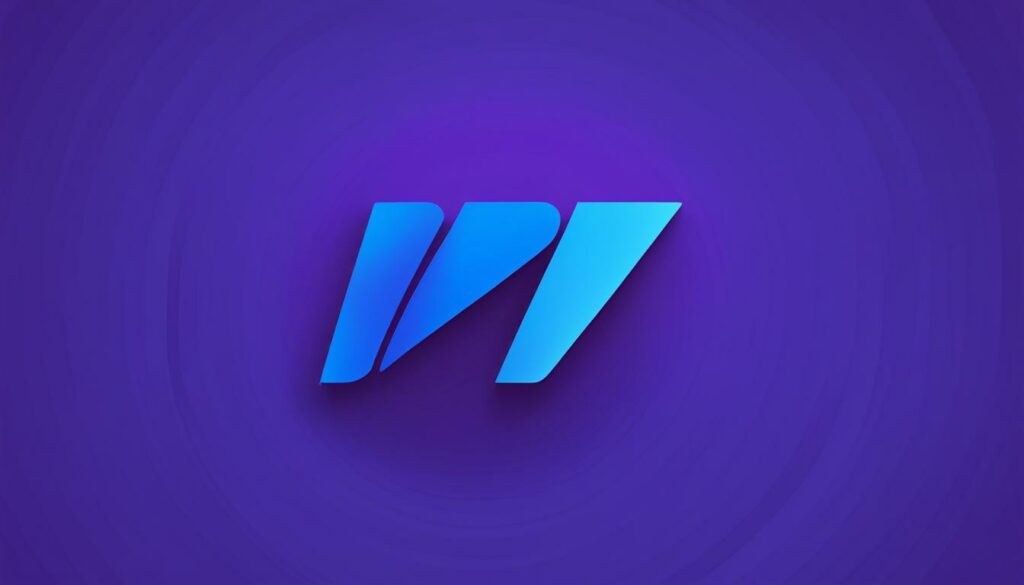Clickjacking poses a significant threat to your website’s security. This deceptive attack can lead to unintended actions, such as downloading malware or unauthorized fund transfers, endangering both your site and your users. To defend against clickjacking, it is crucial to understand and implement the X-Frame-Options header.
The X-Frame-Options header is a server-side method recommended by security experts. By specifying how a browser should handle framing of your webpages, X-Frame-Options provides a powerful defense against clickjacking attacks. It offers three options:
- DENY: Prevents the page from being displayed in any frame, regardless of domain.
- SAMEORIGIN: Allows the page to be displayed in a frame on the same domain.
- ALLOW-FROM URI: Allows the page to be displayed in a frame only on a specified URI.
Implementing X-Frame-Options is an effective way to protect your website from clickjacking attacks, ensuring the security and integrity of your site and the trust of your users.
Key Takeaways:
- X-Frame-Options is a server-side method recommended by security experts to protect against clickjacking attacks.
- The header offers three options: DENY, SAMEORIGIN, and ALLOW-FROM URI.
- Implementing X-Frame-Options is essential for safeguarding your website’s security and user trust.
- Regularly test your site for clickjacking vulnerabilities and assess the effectiveness of your defense measures.
- Consider other defense mechanisms like Content Security Policy and SameSite cookies to complement X-Frame-Options.
By understanding and implementing X-Frame-Options, you can ensure a robust defense against clickjacking attacks, safeguarding your website and protecting your users from potential malicious activities.
Understanding Clickjacking and its Variations
Clickjacking is a malicious technique that involves presenting a hidden or disguised webpage element on top of a visible page, deceiving users into unknowingly interacting with the hidden element. This attack can have severe consequences, such as unauthorized fund transfers or the inadvertent sharing of personal information.
While clickjacking itself can take various forms, two common variations are likejacking and cursorjacking:
- Likejacking: Likejacking is a manipulation of the Facebook “Like” button that tricks users into unintentionally liking a particular page. By overlaying the hidden element on an attractive webpage, users may unknowingly and unintentionally like the page, leading to undesired consequences.
- Cursorjacking: Cursorjacking involves manipulating the cursor position to confuse and deceive users. By altering the cursor’s appearance or behavior, attackers can mislead users into performing unintended actions.
A typical example of clickjacking is when an attacker creates an enticing webpage offering a free trip. Behind the scenes, the attacker secretly loads a bank transfer page within an invisible iframe. When users click the button to claim their free trip, they unknowingly trigger a click on the hidden transfer button, resulting in funds being transferred to the attacker’s account.
It is important for website administrators to be aware of these clickjacking variations and the potential risks they pose to the security of their websites.
Clickjacking Vulnerability
Clickjacking vulnerability refers to the susceptibility of a webpage to be targeted and exploited by clickjacking attacks. Websites that do not have appropriate defenses in place against clickjacking are at high risk of falling victim to such attacks.
Clickjacking Attack Example
Let’s take a closer look at an example of a clickjacking attack:
“Hey, check out this amazing offer! Click here to win a free trip to the Maldives!”
Unbeknownst to the user, this attractive offer is actually a clickjacking attack in disguise. Behind the scenes, the attacker has loaded a hidden bank transfer page within an iframe. When the user clicks the button to claim the free trip, they unknowingly trigger a click on the hidden transfer button, resulting in funds being transferred to the attacker’s account.
Understanding Likejacking
Likejacking is a specific variation of clickjacking that targets the Facebook “Like” button. By manipulating the appearance and behavior of the “Like” button, attackers can trick users into unintentionally liking a particular page. This can lead to the propagation of spam or the spreading of malicious content.
Understanding Cursorjacking
Cursorjacking is another variation of clickjacking that utilizes deceptive cursor manipulation to confuse and mislead users. By altering the cursor’s position or behavior, attackers can trick users into unknowingly clicking on hidden elements, potentially leading to unintended actions or the execution of malicious commands.
| Clickjacking Variation | Description |
|---|---|
| Clickjacking | An invisible or disguised element is overlaid on top of a visible webpage, deceiving users into interacting with the hidden element. |
| Likejacking | The Facebook “Like” button is manipulated to trick users into unintentionally liking a particular page, leading to potential spam propagation or the spreading of malicious content. |
| Cursorjacking | The cursor position is altered to deceive users into unknowingly clicking on hidden elements, potentially resulting in unintended actions or the execution of malicious commands. |
Implementing X-Frame-Options for Clickjacking Defense
X-Frame-Options is a powerful server-side method to protect your website from clickjacking attacks. By adding the X-Frame-Options header to the HTTP response of your webpages, you can control whether they can be displayed within a frame. Let’s explore X-Frame-Options best practices, its limitations, and the security it provides.
When implementing X-Frame-Options, you have three options:
- DENY: This option prevents any domain from displaying your page in a frame. It offers the highest level of clickjacking protection.
- SAMEORIGIN: Using this option allows your pages to be displayed in a frame on the same domain. It is a widely-used configuration that provides adequate defense against clickjacking.
- ALLOW-FROM URI: With this option, you can specify a URI that is allowed to display your page in a frame. However, it is worth noting that ALLOW-FROM is not supported by all browsers and is considered a deprecated option in most modern browsers.
It is important to implement X-Frame-Options on each individual page that needs protection. Although X-Frame-Options is effective, it does have some limitations to be aware of. X-Frame-Options does not support whitelisting multiple domains or displaying a page in frames on both the current website and an external site. Additionally, the ALLOW-FROM option lacks universal browser support, making it less reliable for consistent clickjacking defense.
While X-Frame-Options remains a popular choice for clickjacking protection, there are alternative methods available. Content Security Policy (CSP) with the frame-ancestors directive allows you to specify which domains can frame your content, providing a more flexible approach. However, it is important to consider that Content Security Policy might not be supported by all browsers, especially older versions.
When implementing X-Frame-Options, it is crucial to stay informed about the latest security standards and browser compatibility. Regularly testing your website for clickjacking vulnerability and assessing the effectiveness of your defense measures is essential for maintaining robust security.

Clickjacking Testing and Vulnerability Assessment
It is crucial to determine if your website is vulnerable to clickjacking attacks. Conducting a clickjacking vulnerability test will help you identify potential weaknesses and assess the effectiveness of your site’s defenses. By simulating a clickjacking attempt, you can understand the level of risk your site may face from malicious actors trying to exploit this vulnerability.
To conduct a clickjacking test, create an HTML page that attempts to include a sensitive page from your website in an iframe. If the sensitive content appears within the iframe, it indicates that your site is vulnerable to clickjacking. This test allows you to visualize how an attacker might manipulate your site’s content and deceive users into taking unintended actions.
However, evaluating clickjacking vulnerability goes beyond a simple test. It is important to assess which anti-clickjacking methods are in place and whether they can be bypassed by attackers. For a comprehensive vulnerability assessment, consider utilizing tools like the Open Web Application Security Project (OWASP) Testing Guide. These resources provide guidance on clickjacking vulnerability testing and help identify potential weaknesses that need to be addressed.
Clickjacking vulnerability testing is an essential step in strengthening your website’s defenses. By proactively identifying and addressing vulnerabilities, you can protect your site and its users from the risks associated with clickjacking attacks.
Example of a Clickjacking Test:
<html>
<head>
<title>Clickjacking Vulnerability Test</title>
</head>
<body>
<h1>This is a clickjacking test page</h1>
<iframe src=”https://www.yourwebsite.com/sensitive-page” style=”opacity:0″>
</body>
</html>
Insert the provided example HTML code into a new HTML file and host it on your website. Replace “www.yourwebsite.com/sensitive-page” with the URL of the sensitive page you want to test. If you load this test page and see the sensitive content appearing within the iframe without any user interaction, it indicates that your site is vulnerable to clickjacking.
Performing clickjacking vulnerability testing and regularly assessing your website’s exposure to clickjacking risks is crucial to maintaining a secure online presence. By proactively identifying vulnerabilities and implementing appropriate safeguards, you can protect your site and safeguard your users’ trust.
| Benefits of Clickjacking Vulnerability Testing | Actions |
|---|---|
| Identify vulnerabilities in your website | Perform clickjacking tests using the provided example code |
| Assess the effectiveness of existing anti-clickjacking measures | Review the results of the clickjacking vulnerability test |
| Strengthen your website’s defenses | Address any vulnerabilities or weaknesses identified during the testing process |

Content Security Policy and SameSite Cookies
In addition to X-Frame-Options, there are other methods to defend against clickjacking attacks. Content Security Policy (CSP) can be used with the frame-ancestors directive to specify which domains are allowed to frame the content. This provides a more flexible approach compared to X-Frame-Options.
Another defense mechanism is the use of SameSite cookies, which prevent session cookies from being included when a page is loaded in a frame. By marking cookies as SameSite, the user’s authentication information is not sent to a potentially malicious site.
Note: SameSite cookies may not provide full protection if the clickjacking attack does not require authentication. It is important to implement these methods as part of a defense-in-depth strategy to enhance overall security.
To summarize, Content Security Policy (CSP) and SameSite cookies are effective clickjacking defense alternatives that can be used alongside or as an alternative to X-Frame-Options. These methods provide additional layers of protection against clickjacking attacks, complementing the overall security measures of a website.

As part of a comprehensive security strategy, the integration of Content Security Policy (CSP) and the implementation of SameSite cookies contribute to creating a robust shield against clickjacking vulnerabilities.
Browser Support for X-Frame-Options and Alternatives
When it comes to defending against clickjacking attacks, it’s important to consider the browser compatibility of the chosen defense mechanism. X-Frame-Options, a widely used method, is supported by major browsers. However, it’s worth noting that the ALLOW-FROM option is not widely supported across browsers. Additionally, some browsers prioritize X-Frame-Options over the frame-ancestors directive in the Content Security Policy.
To ensure wider browser support, it is recommended to consider a combination of X-Frame-Options and Content Security Policy frame-ancestors. This allows you to leverage the strengths of both approaches. Content Security Policy provides a more robust and future-proof solution, allowing for the authorization of multiple domains to frame the content. However, it’s important to keep in mind that Content Security Policy lacks support in Internet Explorer.
Here’s a summary of the browser support for X-Frame-Options and Content Security Policy:
| Browser | X-Frame-Options Support | Content Security Policy Support |
|---|---|---|
| Chrome | ✅ | ✅ |
| Firefox | ✅ | ✅ |
| Safari | ✅ | ✅ |
| Edge | ✅ | ✅ |
| Internet Explorer | ✅ | ❌ |
As seen in the table, X-Frame-Options is well-supported by the major browsers. However, Content Security Policy provides a more versatile approach when it comes to authorizing multiple domains to frame content. Keep in mind the limitations of both methods and choose the one that best suits your website’s needs and browser compatibility requirements.
Enabling X-Frame-Options in Popular Web Servers
Enabling X-Frame-Options is a straightforward process that requires a web server configuration change. By implementing this security measure, you can protect your website from clickjacking attacks.
For Nginx, you can add the X-Frame-Options header to the server block config. This ensures that all responses containing HTML content include the X-Frame-Options header, providing clickjacking protection. Here’s an example of how to configure X-Frame-Options in Nginx:
server {
listen 80;
server_name example.com;
add_header X-Frame-Options "SAMEORIGIN";
# Other Nginx configuration directives
}
In Apache, you can add the X-Frame-Options header to the httpd.conf file. This will apply the X-Frame-Options header to all responses containing HTML content. Here’s an example of how to configure X-Frame-Options in Apache:
<IfModule mod_headers.c>
Header always set X-Frame-Options "SAMEORIGIN"
</IfModule>
Similarly, in IIS, you can add the X-Frame-Options header to the Web.config file. This will ensure that all HTML responses include the X-Frame-Options header. Here’s an example of how to configure X-Frame-Options in IIS:
<configuration>
<system.webServer>
<httpProtocol>
<customHeaders>
<add name="X-Frame-Options" value="SAMEORIGIN" />
</customHeaders>
</httpProtocol>
</system.webServer>
</configuration>
By following the specific instructions for each web server, you can easily implement X-Frame-Options and enhance the security of your website.

To further illustrate the implementation process, here’s a detailed comparison of X-Frame-Options configuration steps for Nginx, Apache, and IIS:
| Nginx | Apache | IIS |
|---|---|---|
| Add the X-Frame-Options header to the server block config | Add the X-Frame-Options header to the httpd.conf file | Add the X-Frame-Options header to the Web.config file |
add_header X-Frame-Options "SAMEORIGIN"; |
<IfModule mod_headers.c> |
<configuration> |
Implementing X-Frame-Options on your web server is an important step in safeguarding your website from clickjacking attacks. Make sure to consult the specific documentation for each server to ensure a successful implementation.
Best Practices for Clickjacking Defense
To effectively defend against clickjacking attacks and ensure the security of your website, it is crucial to follow these best practices:
Implement X-Frame-Options or Content Security Policy
One of the key steps in clickjacking defense is implementing either X-Frame-Options or Content Security Policy (CSP) with the frame-ancestors directive. These security measures prevent your pages from being framed on unauthorized domains.
- X-Frame-Options: Add the X-Frame-Options header to your HTTP responses with the desired value (DENY, SAMEORIGIN, or ALLOW-FROM URI) to control whether your pages can be displayed within a frame.
- Content Security Policy: Use CSP with the frame-ancestors directive to specify the domains allowed to frame your content. This provides a more flexible approach compared to X-Frame-Options.
Ensure Consistent Application
Regardless of the chosen defense mechanism, it is crucial to apply it consistently throughout your website. Implement X-Frame-Options or CSP on all the pages that should not be framed to maintain a robust clickjacking defense.
Regularly Test for Vulnerabilities
Perform regular clickjacking vulnerability tests to identify any weaknesses in your defense measures. By conducting proactive assessments, you can stay one step ahead of potential clickjacking attacks and address vulnerabilities promptly.
Stay Updated on Browser Support and Security Standards
Keep yourself informed about the latest browser support for X-Frame-Options, Content Security Policy, and other relevant security standards. Stay updated to ensure that your clickjacking defense strategy remains effective as browsers evolve.
By following these best practices, you can minimize the risk of clickjacking attacks and enhance the overall security of your website.
| Best Practices for Clickjacking Defense | Benefits |
|---|---|
| Implement X-Frame-Options or Content Security Policy | – Prevent unauthorized framing of your pages – Provide a strong defense against clickjacking attacks |
| Ensure Consistent Application | – Maintain a robust clickjacking defense across the entire website |
| Regularly Test for Vulnerabilities | – Identify weaknesses in your defense measures – Address vulnerabilities promptly |
| Stay Updated on Browser Support and Security Standards | – Adapt to evolving browser requirements – Stay ahead in clickjacking defense |
Conclusion
Clickjacking is a severe threat to website security, exposing users to various malicious activities. To protect your website from clickjacking attacks, it is crucial to understand and implement defense mechanisms like X-Frame-Options, Content Security Policy, and SameSite cookies. By following best practices and regularly testing for vulnerabilities, you can ensure the security and integrity of your site.
X-Frame-Options provides a server-side method to control whether a webpage can be displayed within a frame, offering options like DENY, SAMEORIGIN, and ALLOW-FROM URI. However, it is important to note that ALLOW-FROM is not widely supported.
In addition to X-Frame-Options, Content Security Policy allows you to specify which domains are allowed to frame the content, providing a more flexible defense approach. SameSite cookies also contribute to preventing unauthorized access to session cookies when a page is loaded in a frame.
By staying up to date with evolving browser support and security standards, you can stay one step ahead of potential clickjacking threats. Regularly test for clickjacking vulnerabilities and ensure consistent application of the defense mechanisms throughout your site. Protect your website and safeguard your users’ data by implementing these best practices.
FAQ
Q: What is clickjacking?
A: Clickjacking is an attack where a user is tricked into clicking on a disguised or invisible element on a webpage, leading them to perform actions unintentionally.
Q: How can X-Frame-Options protect my site from clickjacking?
A: X-Frame-Options is a server-side method that specifies whether a browser should allow a webpage to be rendered within a frame. By implementing X-Frame-Options, website administrators can defend against clickjacking attacks.
Q: What are the variations of clickjacking?
A: Clickjacking has variations such as likejacking, where the Facebook “Like” button is manipulated, and cursorjacking, which changes the cursor position to deceive users.
Q: How do I implement X-Frame-Options?
A: To implement X-Frame-Options, you need to add the X-Frame-Options header in the server’s HTTP response. This can be done through server configuration changes in popular web servers such as Nginx, Apache, and IIS.
Q: Can clickjacking vulnerabilities be tested?
A: Yes, you can test if your site is vulnerable to clickjacking by creating an HTML page that attempts to include a sensitive page from your website in an iframe. If the sensitive content appears within the iframe, your site is vulnerable to clickjacking.
Q: Are there alternatives to X-Frame-Options for clickjacking defense?
A: Yes, alternatives to X-Frame-Options include Content Security Policy (CSP) with the frame-ancestors directive and SameSite cookies.
Q: Which browsers support X-Frame-Options?
A: X-Frame-Options is supported by major browsers, but the ALLOW-FROM option is not widely supported. It is recommended to use a combination of X-Frame-Options and Content Security Policy for wider browser support.
Q: What are the best practices for clickjacking defense?
A: Best practices for clickjacking defense include implementing X-Frame-Options or Content Security Policy consistently throughout the site, regularly testing for vulnerabilities, and staying updated on evolving browser support and security standards.












